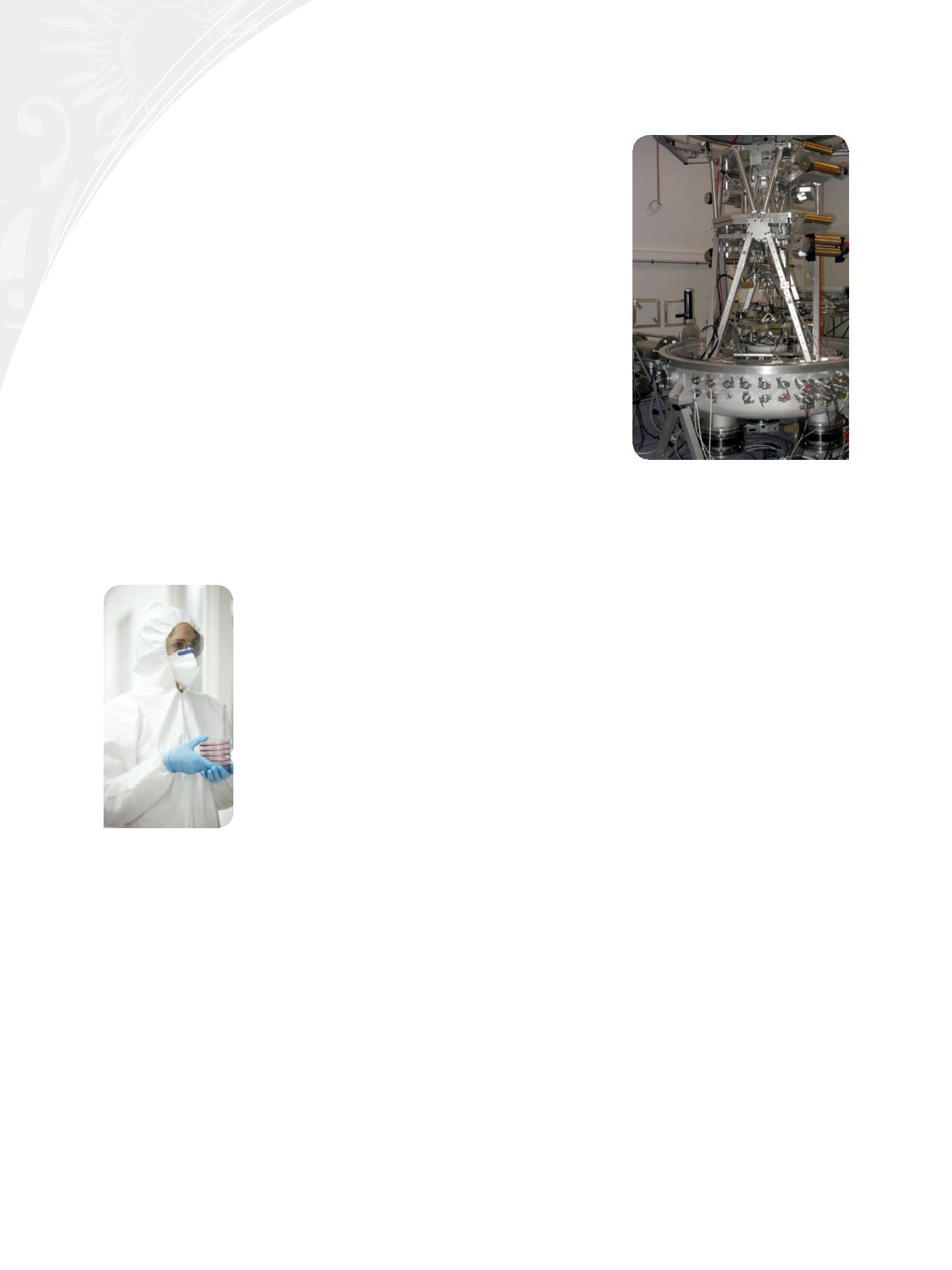

PeRFORminG the ROLe OF An eXPeRt AnD ADViSOR
The
Comité Science et Métrologie (Standing Committee for Science and Metrology)
takes an active part in these redefinition efforts. It has thus met on this theme at
the Bureau International des Poids et Mesures (International Bureau on Weights and
Measures, BIPM) in Sèvres in April 2013. At this session, the Comité Science et Métrologie
has interviewed Martin Milton, the director of BIPM, and Michael Stock, the Director of the
Electricity Department and (Interim) Director of the Mass Department of BIPM. Both have
provided an overview on the obstacles that remain to be addressed before any redefinition
of the SI may take place, including the persistent divergence between the experimental
values obtained for Planck’s constant. Moreover, the Comité Science et Métrologie has
looked into drafting the next presentation brochure of the SI, edited by BIPM.
In 2014, the
Comité Science
et Métrologie
organized a colloquium to celebrate the
centenary of the Sagnac effect discovery :
Sagnac Effect: 100 years later
- 10 October
2013
30
. In 1913, indeed, the French physicist Georges Sagnac observed a phase difference
in the interference of two luminous signals circulating in two opposite directions on the
circumference of a rotating disc with their source of emission is on this very disc. This
discovery, known as the Sagnac effect, was published in the same year in the
Comptes
Rendus de l’Académie des sciences
. It lead to the invention of ring laser gyroscopes, which
for example allow for aircraft navigation (10 October 2013).
science and biosafety
The
Comité Science et Biosécurité [Committee for Science and Biosafety Issues]
of the Académie des
Sciences has replaced in 2014 the
Comité Science et Sécurité (Standing Committee for Science and
Safety Issues)
. It gathers a group of about fifteen members of the Académie along with some external
personalities, all experts from different fields pertaining to the life and medical sciences - cell biology,
molecular biology and genetics, bacteriology, virology, risks associated with the use of toxins, immunology,
chemistry, computer sciences, plant biology, the environment and synthetic biology.
The Académie has warned the political decision makers on how essential it was to promptly implement the
appropriate goals for ensuring biosafety in France, which are recommended in the Académie’s report
Les
menaces biologiques. Biosécurité et responsabilité des scientifiques [Biological threats: Biosafety and the
scientists’ responsibilities],
published in 2008 under the supervision of Académie Member Henri Korn
31
.
Some of the proposals expressed in this report have been considered and are being discussed with the public
authorities. Such is particularly the case with the proposal to set up a National Advisory Council for Biosafety
(Conseil National Consultatif pour la Biosécurité, CNCB), with two distinctive sides: a scientific side, with the
Comité Science et Biosécurité
of the Académie des Sciences, and an institutional side, under the supervision of the services of the Prime
Minister and involving representatives from the different ministries and bodies concerned by biosafety issues. Decisions should be shortly
taken with the relevant administration and soon made public but in the current context of threats, the
Comité Science et Biosécurité
felt
it necessary to start exploring these issues by itself, and has committed itself to undertake the following missions:
• to discuss any relevant issue pertaining to biosafety;
• to contribute to the foresight studies that focus on the risks posed by the dual nature of research in life sciences;
• to contribute to raise the researcher’s awareness and respect for agreements and conventions ratified by France in the field of biology;
• to express advice, for the best benefit of the public authorities, on research projects that might lead to the emergence of new
biological threats, through a “risk/benefit” analysis enabling them to identify the critical point beyond which the risks presented by
such research exceed the beneficial effects that are wished for;
• to express the principles with which the agencies in charge of allocating resources should comply, including the Agence Nationale
pour la Recherche [French National Research Agency] and scientific and technological public institutions, in order to avoid funding
research of potential dual nature, whose “benefit/risk” ratio would first appear negative;
• to contribute to updating, should the need occur, the list of protected sectors and sensitive specialities that are subject to the
risks detailed in the policy arrangements for protecting the scientific and technical potential of the nation (Protection du Potentiel
Scientifique et Technique, PPST)
32
;
• to make recommendations to avoid the dissemination of any research result presenting biosafety risks.
© Lne
© engine images - Fotolia
A watt balance



















